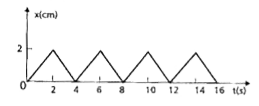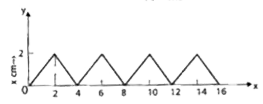Recommended Questions
- Figure shows the position - time graph of a body of mass 0.04 kg . S...
Text Solution
|
Playing Now - The figure shows the position-time (x-t) graph of one-dimensional moti...
03:36
|
Play - Figure shows the position-time graph of a particle of mass 0.04kg. Sug...
03:28
|
Play - Shows the position time graph of a particle of mass 0.04 kg Suggest a ...
03:41
|
Play - चित्र में 0.04 kg सहती के किसी पिंड का स्थिति - समय ग्राफ दर्शाया जय...
05:49
|
Play - The figure shows the position – time (x – t) graph of one – dimensiona...
04:37
|
Play - The position-time graph of a body of mass 0.04kg is shown in the figur...
Text Solution
|
Play - Figure shows the position-time graph of a body of mass 0.04 kg. Sugg...
Text Solution
|
Play - Figure shows the position-time graph of a body of mass 0.04 kg. Sugg...
03:37
|
Play

